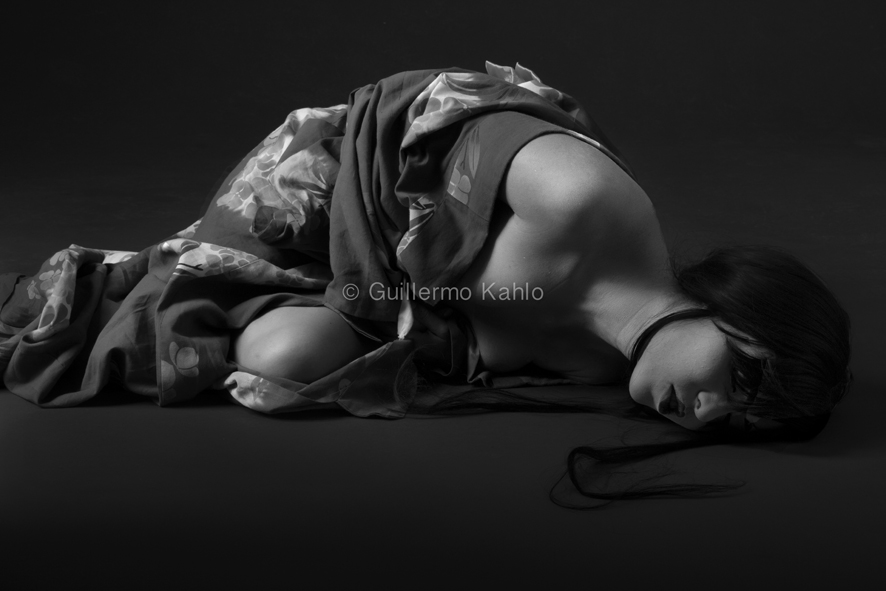Guillermo Kahlo Alcalá
Fragmented Eternity
Faces that keep us company, eyes that return our gaze, gestures that stay with us in their frankness or subtlety. Throughout history, the great portraits are eloquent of the moment and situation of the people who were captured, of the talent of those who executed them. They are invested in their time and they transcend it.
Above the mechanical act that gave them their origin, they have their own history and the possibility of inserting themselves into everyone's history. They represent the uniqueness of the people portrayed, of the authors and also of those who look at them. This particularity can be taken to the extreme when photographing a person even in their absence, through their clothes, possessions or spaces.
In the photographic act, an instant brings us closer to the human essence described in our individuality. Guillermo Kahlo Alcalá (1961), has made a profession of it for more than 30 years. His references —as he has repeatedly acknowledged— are portraitists such as Julia Margaret Cameron (1815-1879), Edward S. Curtis (1868-1952), Irving Penn (1917-2009) and Richard Avedon (1923-2004). However, it is his own deductive process that leads him to execute a unique portrait, with which he has fixed his own place in history.
To this process, introspective in its execution and results, often preceded by memorable anecdotes, Kahlo adds a remarkable materiality in his work. It can be a photographic print in silver on gelatin, digital or with ink, like the ones he has published in numerous magazines and books. All his images express a tangible sensation, product of the extreme care in the processes and of the last invoice in his impression and presentation.
His work attracts us, questions us, identifies us; it contains time and brings us closer to a fragmented eternity, to the universality of all of us.
Gina Rodriguez
Historian and curator of photography
Historic Centre of Mexico City, August 2016
Guillermo Kahlo Alcalá
Fragmented Eternity
Faces that keep us company, eyes that return our gaze, gestures that stay with us in their frankness or subtlety. Throughout history, the great portraits are eloquent of the moment and situation of the people who were captured, of the talent of those who executed them. They are invested in their time and they transcend it.
Above the mechanical act that gave them their origin, they have their own history and the possibility of inserting themselves into everyone's history. They represent the uniqueness of the people portrayed, of the authors and also of those who look at them. This particularity can be taken to the extreme when photographing a person even in their absence, through their clothes, possessions or spaces.
In the photographic act, an instant brings us closer to the human essence described in our individuality. Guillermo Kahlo Alcalá (1961), has made a profession of it for more than 30 years. His references —as he has repeatedly acknowledged— are portraitists such as Julia Margaret Cameron (1815-1879), Edward S. Curtis (1868-1952), Irving Penn (1917-2009) and Richard Avedon (1923-2004). However, it is his own deductive process that leads him to execute a unique portrait, with which he has fixed his own place in history.
To this process, introspective in its execution and results, often preceded by memorable anecdotes, Kahlo adds a remarkable materiality in his work. It can be a photographic print in silver on gelatin, digital or with ink, like the ones he has published in numerous magazines and books. All his images express a tangible sensation, product of the extreme care in the processes and of the last invoice in his impression and presentation.
His work attracts us, questions us, identifies us; it contains time and brings us closer to a fragmented eternity, to the universality of all of us.
Gina Rodriguez
Historian and curator of photography
Historic Centre of Mexico City, August 2016







